

Blog
One of the most frequent questions we help design teams answer is “which multifamily green building program should we choose?” To help shed some light on the major green building standards, we’ve outlined some of the most important requirements for multifamily building performance that tend to differentiate the programs the most.
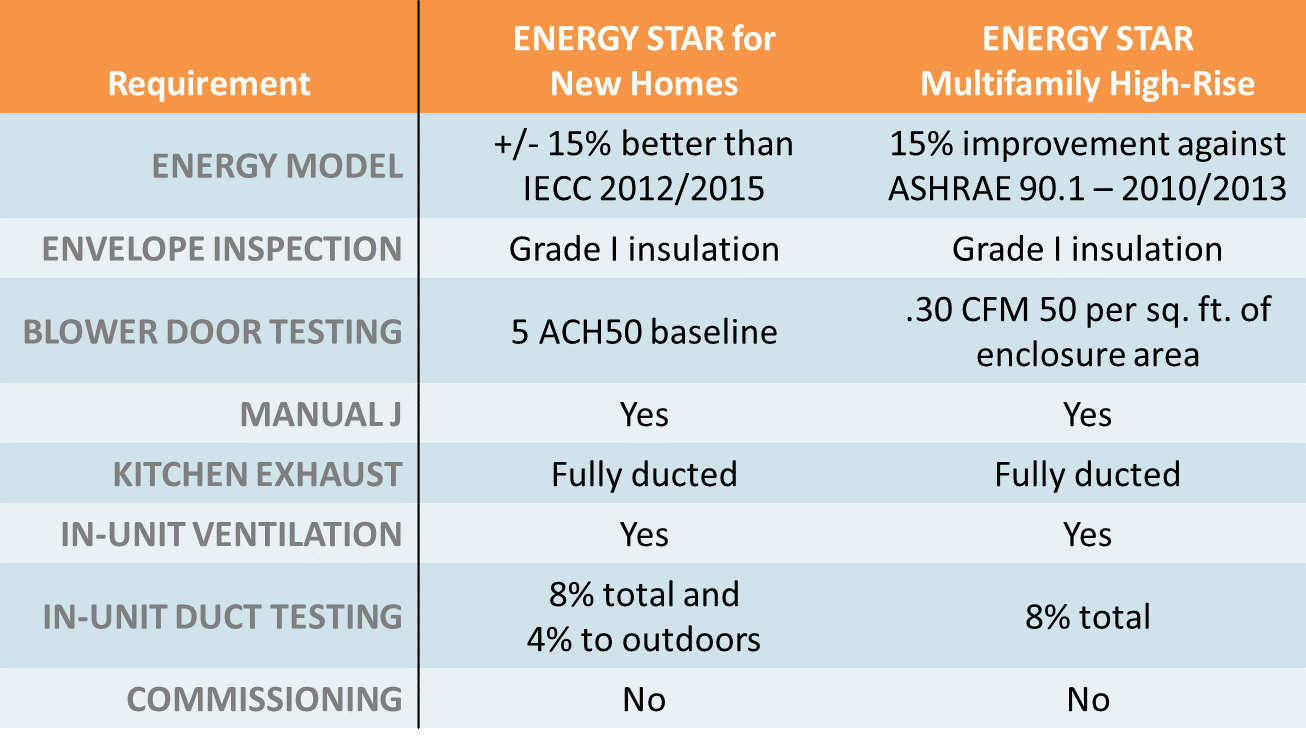
If you’re designing and constructing multifamily buildings, chances are you’ve run into one of the many green building certification programs. Whether mandated by code, tax credits, your loan, or because you want to improve building performance, the differences between programs can be difficult to understand. One of the most frequent questions we help design teams answer is “which multifamily green building program should we choose?”
To help shed some light on the major green building standards, we’ve outlined some of the most important requirements for multifamily building performance that tend to differentiate the programs the most.
Administered by the U.S. Environmental Protection Agency, ENERGY STAR is a free program that includes envelope, mechanical, and moisture management requirements. There are two pathways to certification – ENERGY STAR Certified Homes and ENERGY STAR Multifamily High-rise – based on the height of the building. In the near future these programs will merge into one Multifamily New Construction standard.
Although it isn’t considered a full green building program (it doesn’t address materials, site or water), ENERGY STAR is included in this comparison because several programs and standards reference it as a base requirement.
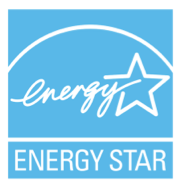
LEED is implemented by the U.S. Green Building Council and there are three options for multifamily projects: LEED v4 Building Design and Construction (BD+C),) LEED v4 Homes and Multifamily Lowrise, and LEED v4 Multifamily Midrise. . There are registration and certification fees and recognition for higher levels of performance as Certified, Silver, Gold, and Platinum.
Some of the most significant differences between LEED NC and LEED Homes include the performance testing requirements under LEED Homes, which results in less paperwork and less time spent on documentation.
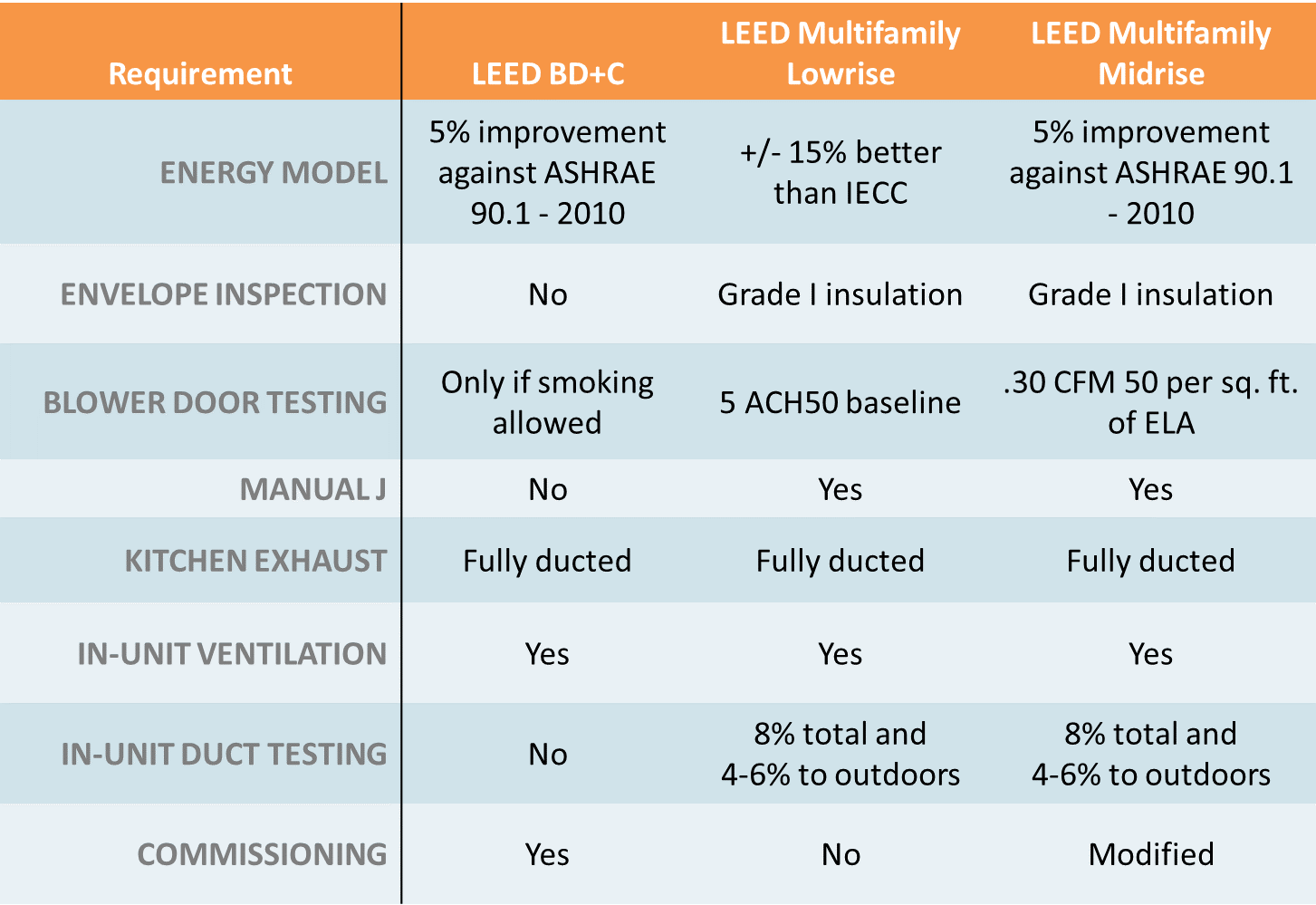
Developed by Enterprise Community Partners, Green Communities is a free program intended for use by affordable housing projects. It encompasses seven major categories and has one base level of certification.
A nice feature of Green Communities is it includes a pathway for moderate and substantial rehab projects. The differences between these pathways are highlighted below:
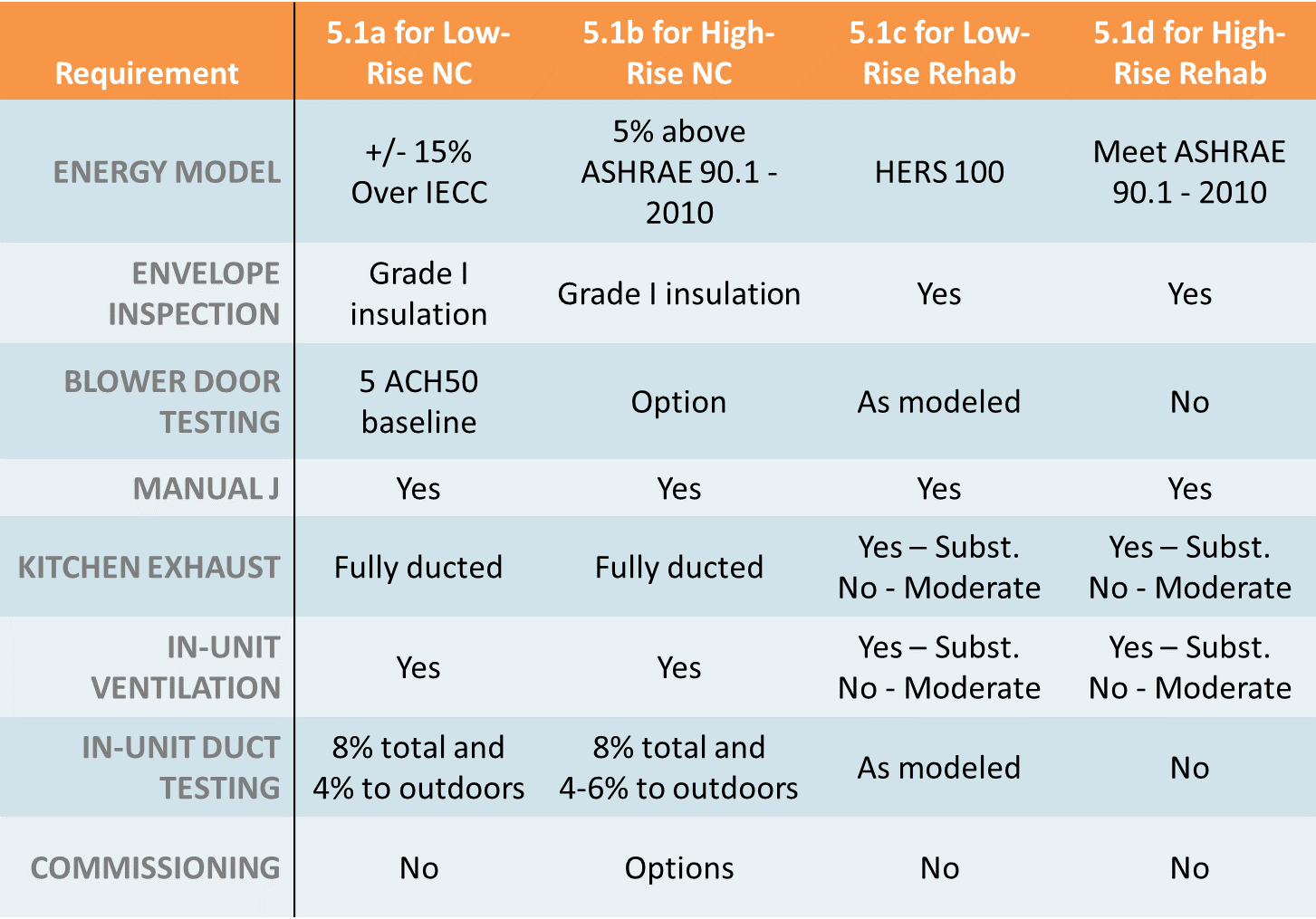
There are two Passive House certification overseeing bodies and both are available for multifamily projects.
Passive House International (PHI) has tiers to differentiate performance and allows retrofits under its EnerPHit standard. In general, the heating demand limit is more difficult to meet.
Passive House Institute U.S. (PHIUS) includes performance requirements to meet ENERGY STAR compartmentalization and duct leakage levels as well as Indoor airPLUS and DOE Zero Energy Ready Homes for low-rise multifamily buildings. It’s generally harder to meet the cooling demand as compared to PHI, but certification fees are generally lower. Currently, there is no option for retrofits.

Administered by Home Innovation Research Labs, the National Green Building Standard (NGBS) is approved as ICC-700. It covers six environmental categories and has tiers for recognizing improvements in performance for Bronze, Silver, Gold, and Emerald levels.
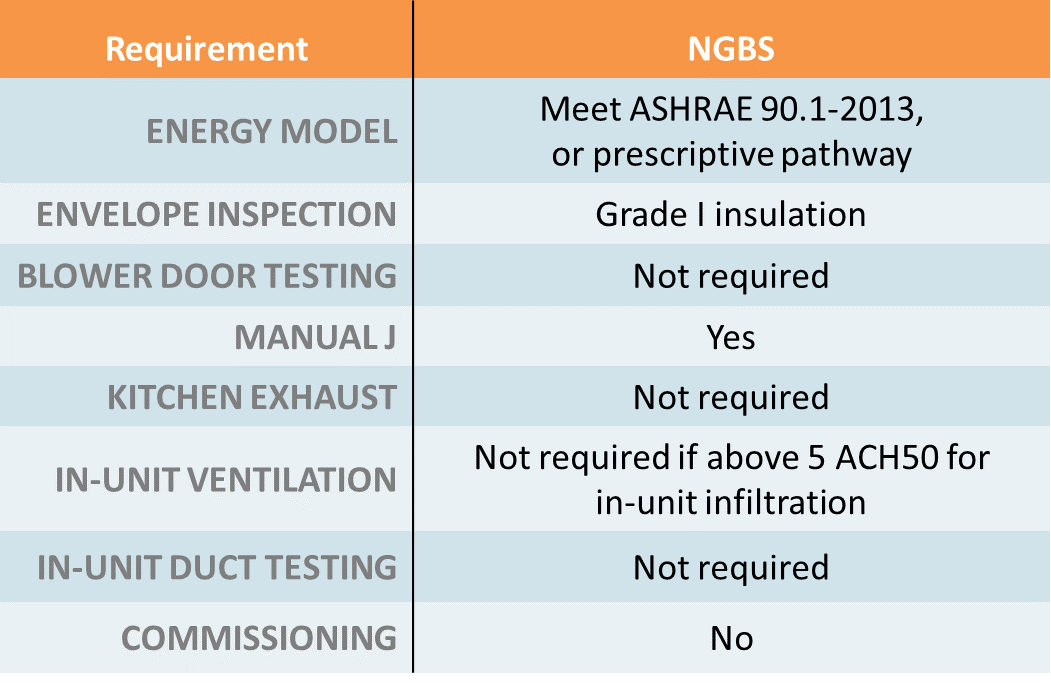
Now let’s try to compare ALL of the above in one chart. While simplified quite a bit, this highlights some of the unique differences across all programs.
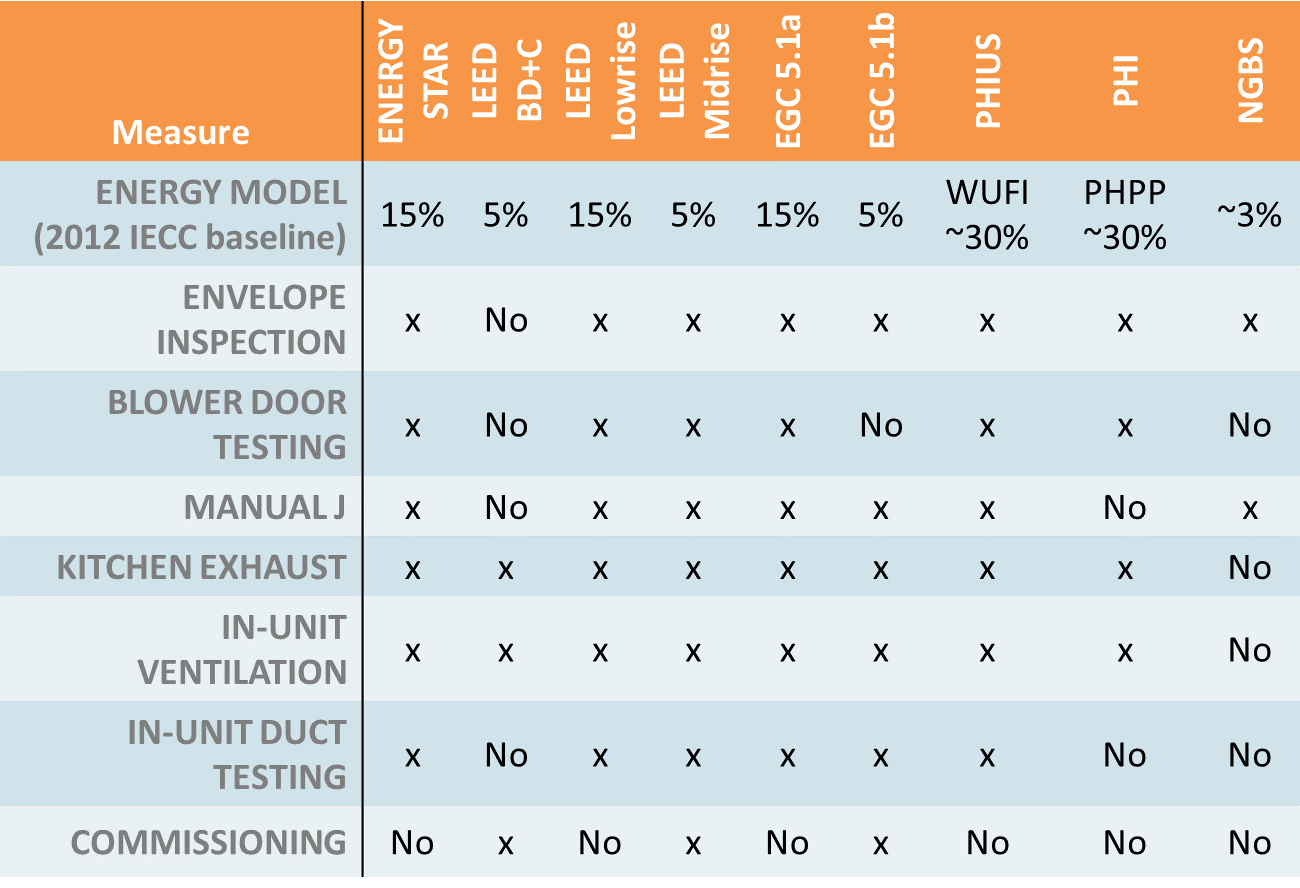
There are nuances in applying all these programs, so it’s important to consider your unique situation. Additionally, local codes and requirements often require additional layers. For a more in-depth analysis on your specific project, reach out to a SWA expert today.
Contributor: Andrea Foss, Sustainability Director
Andrea Foss